Learning how to use suspense in a presentation can be the difference between delivering information in a manner that engages your audience, and facing a room full of people who are watching the clock. Knowing how to use suspense when you are presenting is a key skill to develop for anyone who wants to build a reputation as a first-class presenter. In this article we will explain what suspense is, how it works and how you can use suspense in your presentations. We will also provide you with some real-world examples of when suspense has been used effectively in a presentation.
First let’s turn our attention to the work of director Alfred Hitchcock. Hitchcock is, perhaps, the greatest filmmaker of all time. Starting in 1925 with “The Pleasure Garden” he made 56 films, concluding in 1976 with “Family Plot”. Across that career he changed the face of horror with “Psycho”, made the greatest Bond movie that didn’t feature James Bond with “North by Northwest”, turned the Forth Rail Bridge into an iconic movie setting, and shot an entire film in a lifeboat. His films were shocking, surprising, scary, but most important of all, they were fuelled by suspense.
Hitchcock understood that suspense could elevate a film from something quite ordinary, to something extraordinary. A film is a form of presentation, Hitchcock understood exactly how to use suspense in his presentations. To explain suspense, he once asked an audience to imagine a film where a group of people are sitting around a table discussing baseball, a terribly boring conversation, and then after a few minutes of this inane chatter, a bomb explodes under the table. That would be, he explained, surprising and shocking. He continued by asking the audience to imagine that same scene but this time they know that the bomb is there, and they know exactly when it is going to explode. As the minutes tick by, the audience are increasingly engaged in the scene, they want to shout at the screen, “Stop talking about baseball! There is a bomb under the table!”
Both scenes end in the same way, but in the first the audience have been given only fifteen seconds of surprise, but in the second they have had fifteen minutes of suspense, they have been brought into the action, they are invested in what is happening.
In his 1948 film, “Rope”, Hitchcock shocked the audience at the start of the film by showing two characters killing a third. It is surprising. But the reason the audience stay invested in the film is not because they want to discover “whodunnit”, they already know that, but because the two murderers place the body in a chest and proceed to host a dinner party with that same chest as a table. Now we want to know if they will be discovered, how they will be discovered. By using suspense in this “presentation”, Hitchcock keeps the audience engaged and involved in the movie.
Suspense helps to create questions in the mind of the audience, when people have questions…they want answers. That allows you, as a speaker, to keep your audience engaged.
Knowing how to effectively use suspense in a presentation demands three things:
- Hold something back…
- Let the audience know that you are holding something back…
- Allude to the fact that you will return to that something…
You could go for shock/surprise at the start of your presentation, the big reveal, the “bomb under the table” of Hitchcock’s story, but where does that leave your presentation? How do you maintain the interest of your audience?
If we return to the world of film, the narrative structure of a movie can be condensed into three stages: normality, disruption, new normality. We are presented with the world the characters inhabit, something happens to that world, a journey takes place to resolve that disruption and create a new normality. That is the basic premise of every superhero film you have seen; Peter Parker is a high school nerd, he is bitten by a radioactive spider, he becomes Spiderman and saves the world.
We can view a presentation as a form of storytelling, a good speaker is looking to generate interest from the audience, and knowing how to use suspense can ensure that happens, and that the message you are giving lands and sticks.
Roland Barthes, the French literary theorist, argued that there needed to be a clear sequence of events for a narrative to be successful. These narrative “codes” have been hugely influential in literary, and cinematic, studies. One of the codes Barthes identifies was enigma codes. This is the idea that the producer of a text, deliberately, creates a text that raises questions so that the audience wants to resolve them. We can see these enigma codes in crime dramas, and we can also see them in clickbait headlines.
In your presentation you can embed an enigma code by playing to the natural curiosity of your audience, give them the beginning and the middle of the story, but hold something back…you build suspense by not revealing something important at the start. This is how to use suspense effectively in your presentation.
I have seen this technique used in the legal, professional, and sporting world to great effect.
In the professional world, I watched a speaker describe a research and development project she had been working on. She explained the background, methodology, and research that had gone into the project. The company, she went on to explain, was faced with two choices for driving the project forward, each one with pros and cons attached to it. She described the pros and cons in a scrupulously measured fashion and then said “I will explain which route we took later – just think about which route you instinctively feel is superior.” People listened closely for the rest of the talk, and then she ended with the answer to the conundrum she had faced. The audience looked pleased at getting closure to the story, but the ones who had guessed right look even happier.
While working as a lawyer, I recall a junior lawyer who had to give a ‘case update’ talk to the rest of the department. On this occasion the chosen speaker was the most junior lawyer in the department. We all sat down, ready to be bored rigid yet again. He stood little chance of engaging his ‘prisoners.’ He explained the background to a recent case; outlined the arguments from the pursuer; outlined the arguments from the defender and repeated a few opening remarks from the judge. He then asked us to predict the judgement based on the information given. Suddenly, everyone was in the thick of it pouring out their views and analysis. He told us he would save the result until later and moved onto the next case. He took the same approach with the next case and the next one after that. At the end he gave the judgements for all three cases. It was terrific – he got our attention, held our attention, and had people raving about him afterwards.
The sporting world, of course, is never far from suspense. I once heard a speaker describing a penalty shoot-out, from many decades earlier, in a not so famous match, the suspense technique wouldn’t work so well with a more well-known game. The audience grew more and more engaged as they heard the result of each penalty – miss – GOAL – GOAL – miss – all the way to the last kick of the ball. The audience were desperate to know the result of that last kick…and at that moment the speaker told us that he would come back to that later! I have never seen an audience so keen to find out the result of a game from so long ago.
Hopefully you now understand what suspense is, how it works, and how you can use it in your own presentations. You can now look to use suspense in your next presentation. Hitchcock was known as the master of suspense…and that made him one of the most iconic, and successful, storytellers in history. We would be foolish not to learn lessons from such a master.
(Presenting in the room again for the first time in a while? Have a look at https://www.speakwithimpact.com/presenting-in-the-room-again/ )


